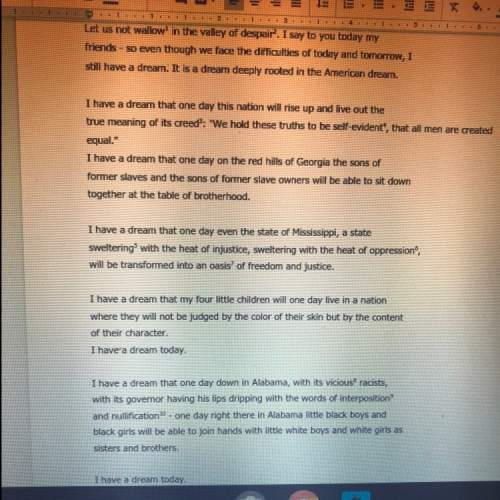
Select the correct answer.
read this excerpt from the story of my life by helen keller. based on the excerpt, what are keller’s feelings about the learning differences between children who hear and children who are deaf?
i had now the key to all language, and i was eager to learn to use it. children who hear acquire language without any particular effort; the words that fall from others' lips they catch on the wing, as it were, delightedly, while the little deaf child must trap them by a slow and often painful process. but whatever the process, the result is wonderful. gradually from naming an object we advance step by step until we have traversed the vast distance between our first stammered syllable and the sweep of thought in a line of shakespeare.
until we have traversed the vast distance between our first stammered syllable and the sweep of thought in a line of shakespeare.
a.
children who hear learn to communicate naturally, while deaf children must overcome obstacles.
b.
children who are deaf understand difficult language such as shakespeare with ease.
c.
children who hear undergo a slow and painful process to learn, while deaf children do not.
d.
children who are deaf undergo the same gradual process to learn as children who hear.

Answers: 1


Other questions on the subject: English

English, 20.06.2019 18:04, boston6686
Describe how subjectivity and other factors (monetary and non-monetary) affect a person's calculation of cost and benefit. give an example of a cost-benefit analysis you have performed. use complete sentences and appropriate economic terms and concepts learned in this course.
Answers: 3


English, 22.06.2019 01:50, jurnee77
Plagiarism quiz read both the paragraph below and the information following it that identifies the source using the american psychological association format. then read each of the numbered statements and determine if each is plagiarized or not. circle “yes” if the statement is plagiarized, “no” if it is not, and then fix the “yes” answers). original source the presence of the taiwanese on everest was a matter of grave concern to most of the other expeditions on the mountain. there was a very real fear that the taiwanese would suffer a calamity that would compel other expeditions to come to their aid, risking further lives, to say nothing of jeopardizing the opportunity for other climbers to reach the summit. but the taiwanese were by no means the only group that seemed egregiously unqualified. camped beside us at base camp was a twenty-five-year-old norwegian climber named peter neby, who announced his intention to make a solo ascent of the southwest face, one of the peak’s most dangerous and technically demanding routes—despite the fact that his himalayan experience was limited to two ascents of neighboring island peak, a 20,274-foot bump that required little more than vigorous walking. krakauer, j. (1998). into thin air: a personal account of the mount everest disaster. new york: anchor books, 122 - 3. student samples yes 1. there was a very real fear that the taiwanese would suffer a calamity that would compel other expeditions to come to their aid(krakauer, 1998). no) 2. many climbers overestimate their abilities, as krakauer (1998) explains when he writes of peter neby, whose himalayan experience in the past “required little more than vigorous walking” (122 - 3). no 3. jon krakauer (1998) discusses other concerns besides those of unpredictable weather and his own climbing group’s capabilities. for example the existence of a taiwanese group on everest was a matter of serious unease to most everyone else on the mountain. yes/no 4. krakauer (1998) states that the taiwanese group was not the only inexpert climbers to attempt mt. everest: camped beside us at base camp was a twenty-five-year-old norwegian climber named peter neby. . [whose] himalayan experience was limited to two ascents of neighboring island peak, a 20,274-foot bump that required little more than vigorous walking (122 – 3). yes/no 5. the author asserts that the taiwanese “were by no means the only group that seemed egregiously unqualified.” yes/no 6. in his book into thin air, jon krakauer (1998) discusses many of the dangers he noted prior to his disastrous attempt to climb mt. everest in 1996. among them were encounters with other groups and individual climbers who were ill-trained and ill-equipped to handle the demands of such a climb.
Answers: 2

English, 22.06.2019 03:20, Spuddle4403
Find a newspaper or magazine (either print or digital form), and select one piece of media to evaluate. after reading/viewing the media, describe it, and explain what you believe the purpose and intended audience of the piece may have been. then, label the techniques (images, layout, video, sound, etc.) that were used, and how those techniques interacted to create either an effective or ineffective piece of media. your response should be at least 200 words.
Answers: 1
You know the right answer?
Select the correct answer.
read this excerpt from the story of my life by helen keller. based...
read this excerpt from the story of my life by helen keller. based...
Questions in other subjects:









English, 21.03.2020 04:40

Mathematics, 21.03.2020 04:40




